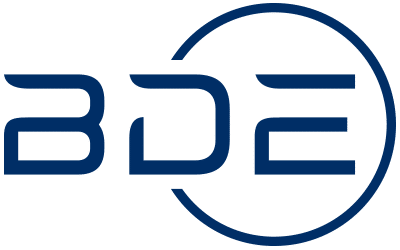LinkedIn is the social media platform that is sadly neglected by many small businesses and startups.
Because it can be hard to understand LinkedIn’s many benefits, this 4 part series running over the course of April (by guest author Anna Colibri of ANNACOLIBRI | tech savvy coaching) explains in detail the value of LinkedIn for small businesses, and goes over how to optimise your profile, how to use LinkedIn to vastly increase your lead generation, and how you should run your LinkedIn company page to support your marketing.

Why you should care about LinkedIn: Unlocking the value for small businesses
There are 11 million UK LinkedIn users and 200 million global LinkedIn users, and this number (which is a significant percentage of the worldwide business community) is growing all the time . It’s clear that business people around the world are voting for LinkedIn in a big way with an investment of their time and energy, and this is something they only do because it is worthwhile to their businesses. Plus let’s not forget that at the same time you will be connecting with those people as potential consumers (all business people are also consumers, at the end of the day!).
LinkedIn’s longevity, rapid growth and popularity proves its worth for businesses as well as individuals , but that’s not the full story. LinkedIn’s real value for small businesses is in what it offers in terms of connections, lead generation and the ability to connect with other motivated, creative professionals.
Full Disclosure: what LinkedIn can and can’t do
LinkedIn is a practical site that will help you accomplish your goals if they include:
- Enhancing your web presence
- Finding leads and increasing your sales
- Improving your search engine ranking
- Promoting your company
- Networking
- Finding talent/advice
- Finding a job/new work
- Doing research
However, putting together a LinkedIn profile, company page and participating effectively in groups requires time, effort and strategy. Be prepared to put in at least the same amount of time you into writing a CV and cover letter.
**Don’t worry! Next week, we’ll cover how to create an effective profile on LinkedIn.**
Why you want to be LinkedIn and not get left behind
It’s easy to see LinkedIn as an online CV, and it is a great tool for getting a job (employers really will look at your profile — read the stats below). But even if you’re not looking for a job LinkedIn is a really useful business tool if you know how to leverage it.
How LinkedIn benefits your small business
Page Rank
Not to nerd out on you, but we’re going to talk Search Engine Optimisation (SEO) here for a second in order to help you understand why LinkedIn is important.The first thing you need to know is that LinkedIn, as a website, has a PageRank of 9 out of a possible 10. But, you say, what does it mean? PageRank, named after Larry Page (Google’s CEO and creator of PageRank) is the original Google algorithm that assigns value to websites.
i.e the higher a site’s PageRank, the more likely that search results coming from that site will rank high in the SERPs (Search Engine Results Position).
You can do your own experiment if you have a LinkedIn profile, even a “bad” one. Search for your name on Google and, chances are, your LinkedIn profile will be one of the top three results. Studies show that people are most likely to click through to the number one link. So, if people (such as employers or potential collaborators) are looking for you, they will be very likely to find your LinkedIn profile and click through to it.
Lead Generation
LinkedIn is great for lead generation. We’ll be discussing this more in part three of our series, but here’s the deal, in a nutshell: people on LinkedIn are actively looking for business related products, services and connections. By establishing yourself as an authority and resource on LinkedIn you can let people get to know you and take you seriously so that, when you are ready to make an offer people are far less likely to refuse.
People trust LinkedIn making it a valuable sales tool
According to a January 2013 Wall Street Journal/Vistage Small Business CEO survey, LinkedIn topped the list of social media tools that small business owners use and believe have the most potential to help their businesses.
In a survey of 3,094 sales representatives and consultants conducted by Jill Konrath and Ardath Albee (authors of Cracking The LinkedIn Sales Code) top sales representatives use LinkedIn an average of 6 hours per week more than their less successful counterparts and consider it an integral part of their sales strategies.
Also according to the survey, employers go to your LinkedIn profile first, even if you applied online. In other words, just as your business needs a website, you need a LinkedIn profile.
Collaboration and Business Partnering
Although there are many bootstrapping solopreneurs in today’s business world, there are also a large number of people looking for partnerships. Are you one of them? Jump on LinkedIn and start your research. It’s easy to filter searches by keywords with the skills you are looking for. And, chances are, if you are searching for them, they are searching for you.
Hint for next week: make your profile keyword rich. Try the skills & expertise feature to see which skills are trending now.
Finding new employees/ contacts
Let’s say your small business is looking for people with key skills such as photography. Conduct an advanced search for people using the keyword “photography” and filter by your postcode to find photographers near you.. As a blogger myself, being able to find talent in areas such as programming, graphic design, videography, publishing and photography is quite useful.
Which skills and talents are you and your company looking for?
Networking opportunities
LinkedIn is all about developing relationships. Think about it. You can search for people who look like they have skills, interests, experience and connections that interest you and you can easily, through LinkedIn’s “degrees of connection” feature, find out who you know who knows them. This makes building your network easier. Using the above example, I could spend some time researching profiles, connecting with professionals who look interesting and eventually meeting up, no cold calling required.
Tip: download the free app, rapportive (http://rapportive.com/). It allows you to see which major social networks your email contacts are part of, including LinkedIn, and follow them, instantly, from you inbox. And: it replaces Google ads with information. Slick, huh?
Research
LinkedIn is a also a great place to conduct research regarding industry trends, individuals and companies as well as conduct market research. This can be done via LinkedIn Groups, Status Updates, Company pages, Search, Jobs and Signals (a great way to see what people are posting about most recently).
News
This feature is the best way to stay up to date on industry news. It shows most shared articles in your industry (automatically finding and sending most relevant content to your inbox without you needing to search).
Homework: get LinkedIn
If you don’t have one already, create an account on LinkedIn and start looking at all that it can do for you. Brainstorm ways you can use LinkedIn to move your goals forward. Then let us know what you come up with!
Next week: How to create and optimise your LinkedIn profile
Guest Poster:
Anna Colibri, Owner, ANNACOLIBRI | tech savvy coaching
Founded ANNACOLIBRI | tech savvy coaching, a values-based marketing company, in February, 2012. She grew up in Pacific Grove, California, a small town on the edge of the sea. She has had the wonderful fortune to live, study and work in San Francisco, CA, France and India. You can, of course find her on LinkedIn www.linkedin.com/in/annacolibri/.Benefits


